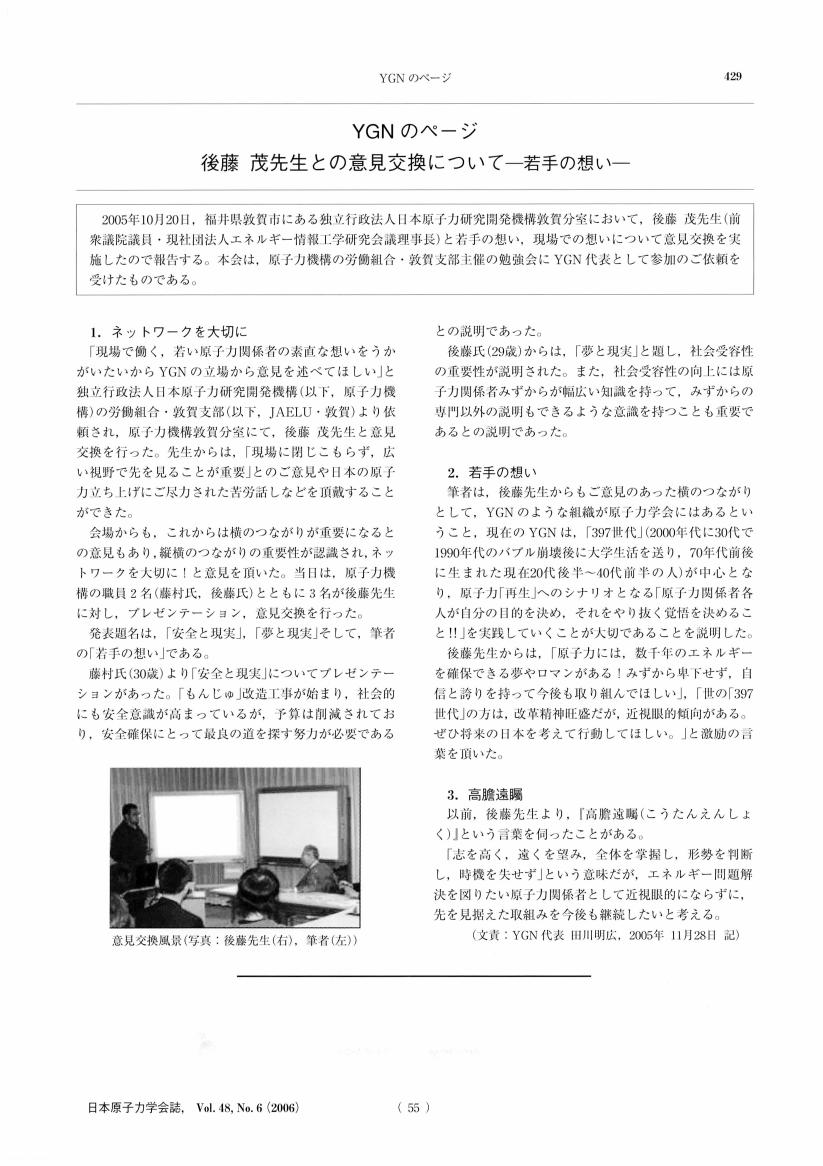3 0 0 0 OA 平面除染による空間放射線量率の評価公園における除染試験結果
- 著者
- 田川 明広
- 出版者
- 一般社団法人 日本原子力学会
- 雑誌
- 日本原子力学会和文論文誌 (ISSN:13472879)
- 巻号頁・発行日
- vol.11, no.2, pp.111-117, 2012 (Released:2012-05-15)
- 参考文献数
- 6
- 被引用文献数
- 2 3
The Japan Atomic Energy Agency decontaminated schools, playgrounds, swimming pools, and houses in nonevacuated, less-contaminated areas in Fukushima for environmental restoration. A small, 150 m2 playground lot in the residential area was chosen for decontamination demonstration, which used routinely available tools and commodities to carry out the work. The surfaces of playground lot equipment, such as swings, slides, and horizontal iron bars, were completely decontaminated by brushing with water and/or detergent. Side gutters around the playground lot were cleaned by removing the mud and then brushed and washed with a high-pressure water jet (7 MPa). The air dose rate at the playground lot was dominated by radiation from the ground surface and adjacent surroundings, such as apartments and rice fields. Two or three centimeters of the surface soil contaminated with cesium was removed manually with shovels, hoes, and other gardening tools. This significantly reduced the average air dose rate of the entire playground lot from 1.5 μSv/h before decontamination to 0.6 μSv/h. These results showed that ground surface decontamination can contribute measurably to the reduction in air dose rate in relatively small areas in residential areas.
1 0 0 0 OA 後藤 茂先生との意見交換について―若手の想い―
- 著者
- 田川 明広
- 出版者
- 一般社団法人 日本原子力学会
- 雑誌
- 日本原子力学会誌 (ISSN:00047120)
- 巻号頁・発行日
- vol.48, no.6, pp.429, 2006 (Released:2019-04-05)
- 著者
- 田川 明広 上田 雅司 梶谷 純男 岡本 久彦 徐 陽 山下 卓哉
- 出版者
- 一般社団法人日本機械学会
- 雑誌
- 年次大会講演論文集 : JSME annual meeting
- 巻号頁・発行日
- vol.2005, no.3, pp.185-186, 2005-09-18
This paper describes the development of a new inspection robot used for the in-service inspection (ISI) of the reactor vessel of the FBR MONJU. The inspection is carried out using a CCD camera for visual tests and an EMAT for volumetric tests at elevated temperature (200 deg.) and high irradiation dose condition (10 Sv/hr). The applicability of a commercial CCD camera and an EMAT have been confirmed by experiments under severe conditions. In addition, reduction of the robot weight from 47kg to 34kg is achieved by optimization of all parts in the robot, these results in a reduction of wear and replacement frequency of tires. A performance improvement with EMAT was attained by a new magnet arrangement and a signal treatment method.
